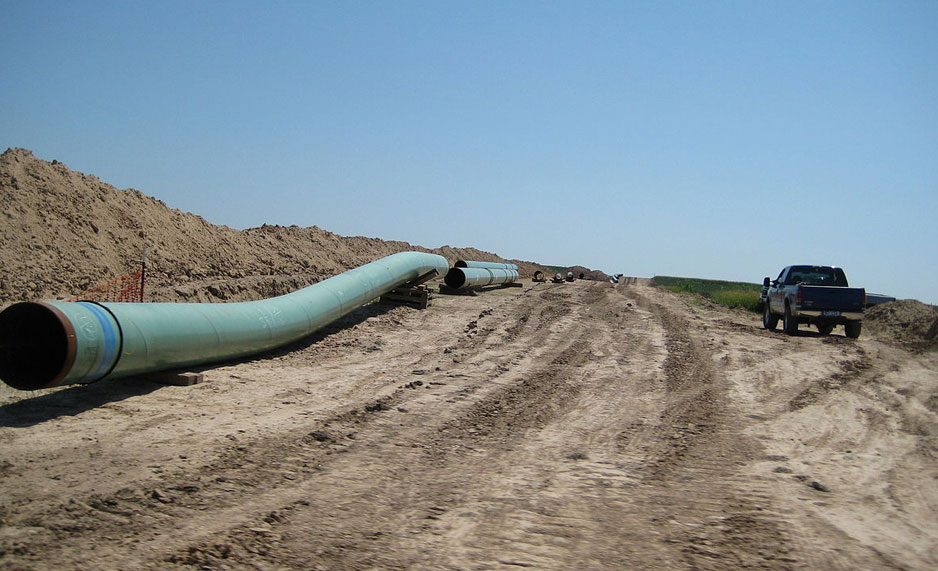
Pipes for the Keystone Pipeline. Photo: shannonpatrick17 / Wikimedia Commons.
The sharp drop in oil prices has changed the debate over Keystone XL, highlighting questions about how the pipeline might affect oil sands production. But the bigger issue is how long the U.S. will continue to pursue contradictory energy and climate policies.
Big energy infrastructure projects – power plants, coal mines, long distance transmission lines – take time, resources and, typically, some political muscle. They create highly visible if short-lived construction jobs, and can spark polarizing debates about land use and other short- and long-term environmental impacts.
The Keystone XL pipeline, intended to carry crude oil from Canada to the Gulf of Mexico, presents the most hotly debated infrastructure decision in recent US history.
Much of the discussion has focused on the immediate direct impacts. The pipeline would create jobs, at least in the short term. It would provide a nearby source of oil – at least to the extent it’s refined locally. It could also affect local habitats and communities. President Obama, who holds the ultimate decision (current legislative action notwithstanding), has offered another yardstick: the pipeline would need to be “on net, something that doesn’t increase climate change” and that does not “significantly exacerbate the problem of carbon pollution.”
How should one measure that?
Source: The Conversation, US
Design and development by Soapbox.

